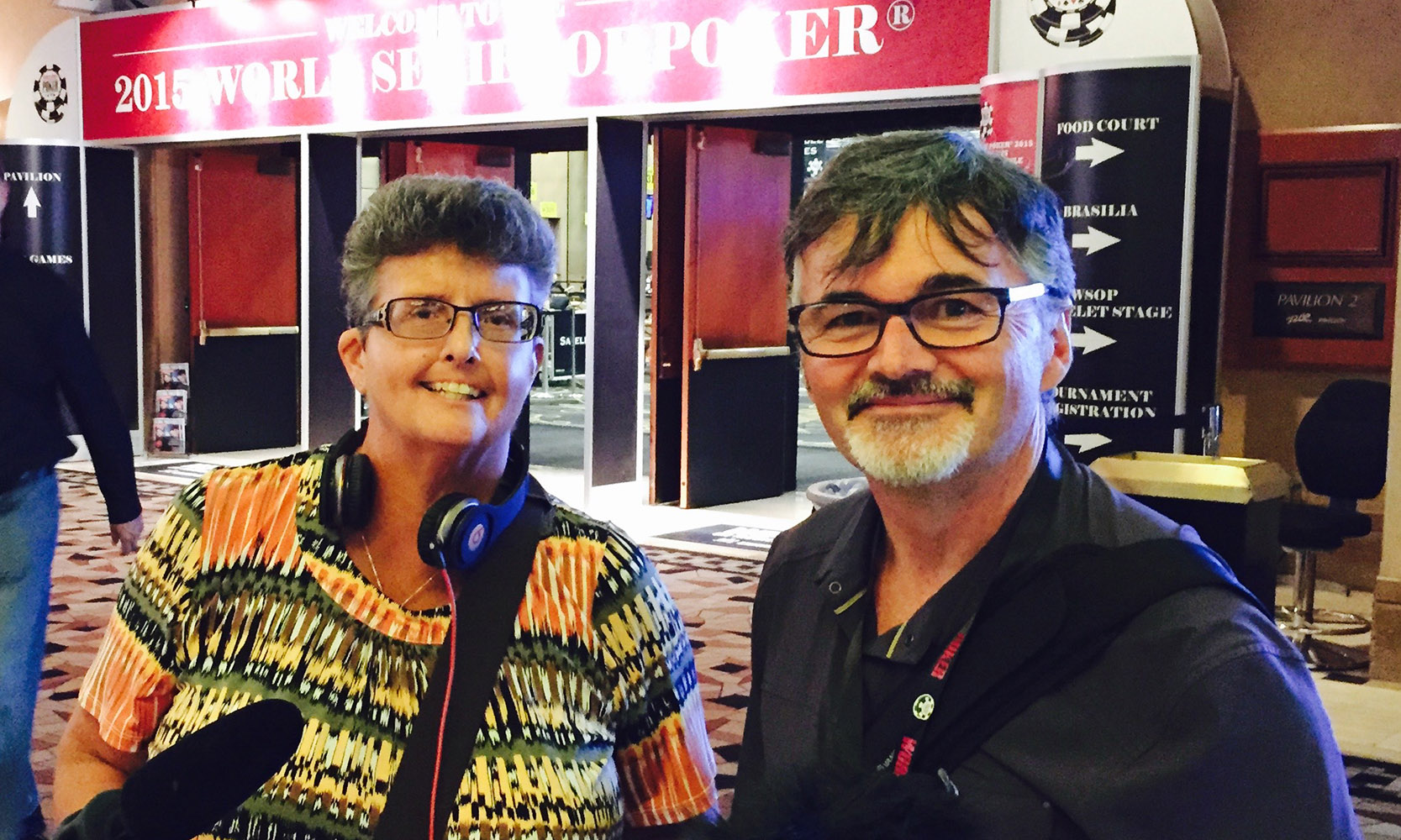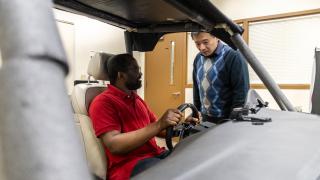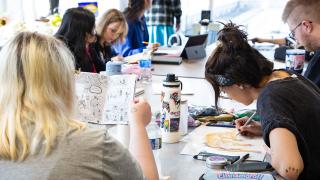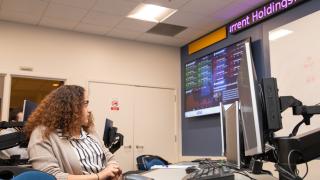
When Journalism and Screen Studies Clinical Professor Jim Gilmore met two poker players with incredible stories of beating the odds, the award-winning documentary filmmaker went all in.
And now his newest project, Cracking Aces: A Woman's Place at the Table, is winning awards, screening at sold-out shows at film festivals across the nation and getting industry attention. The 67-minute documentary focuses on how poker-playing women have challenged the old boys’ club mentality and chipped their way through professional poker barriers.
Gilmore didn’t set out to do a documentary that looked at the poker industry. But while in a city built on the idea of luck, the story found him.
Gathered around a hibachi grill in a Las Vegas restaurant, Gilmore—who was in the city presenting at a Broadcast Education Association conference—discovered he was in the presence of Linda Johnson, a World Series of Poker winner who began her poker career in the late 1970s, and Jan Fisher, a player and former poker dealer who started in the industry at the same time.
“Hearing them talk, I learned that these women were more than great at cards, they challenged the patriarchy at the poker tables. And not only challenged. They created change,” Gilmore said. “I’m not a gambler and I didn’t know much about the game prior to the documentary. But I do know a great story—and this was one.”
This chance meeting sparked a four-year research project for Gilmore, the film’s director, and his producing partner, Tracy Halcomb, a professor at Flagler College.
The original idea for the documentary was a short film that gave a closer look at poker’s pioneering women. Gilmore interviewed Johnson—known around the poker circuit as “The First Lady of Poker”—and Fisher about their experiences on the circuit, how they faced a culture of sexism and harassment, and how they worked to reform that culture.
“We showed them a 15-minute cut and Linda said, ‘Oh wow, you are the real deal,’” Gilmore said. “The next time Tracy and I went to Vegas, there were nearly 50 more female players who wanted to speak to us. They had heard about our project from Linda and Jan.”
The now feature-length picture built upon the foundation of Johnson’s and Fisher’s stories and includes a look at the experience of today’s players.
“As the number of participants grew, I knew we had something even more special and wanted to represent as many voices as possible. We learned more about how experiences can differ by age, if they are a person of color, the playing location and their approach,” he said.
“For example, many women who started playing in the ’70s, ’80s and ’90s emphasized their femininity to distract and charm—which was a strategy using performance and psychological tactics, both elements of the game—by doing things like adding a fake southern accent or flirting,” he said. “But the younger generation doesn’t want to put that mask on. It’s not that they see anything wrong with it; it is just not the way they approach poker. They want to cut through all of that and get to the game. Because of the work done by the pioneers, they can.“
The Acadia Pictures documentary has played at film festivals across the country, including the Sarasota Film Festival in Florida, the Silicon Beach Film Festival in California and the Hobnobben Film Festival in Indiana.
Johnson and Fisher have seen the film and they both gave it two thumbs up: a very special four of a kind. The women knew the experience through their eyes, but we pleased to see that others have recognized the progress that has been made at the poker tables and appreciated their efforts to bring changes forward.
“It was really cool to see that others appreciate what we went through and that we have earned respect. I appreciate the wonderful comments other players made in the film,” Johnson said. “It’s exciting to see how far women have come in poker and how different it is today from when we first started. Today women are treated with respect at the poker table. Abuse is not allowed. It is a pleasure to go into a poker room these days.”
Next up is Las Vegas’ Silver State Film Festival in September, where the film is the opening night feature. The screening will include a panel discussion with some of the women featured in the documentary.
“We’re all very pleased this story is now out there,” Gilmore said, adding that he and Halcomb are in talks with multiple major distribution companies. “It’s also a good reminder that we should make room for others to have a seat at the table. Through these women’s stories, it’s inspiring to see that if room isn’t made, that it’s possible to get one through empowerment and advocacy.”





